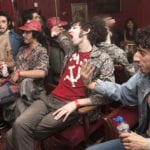 Weird Stuff
Weird Stuff  Weird Stuff
Weird Stuff  Our World
Our World 10 Ways Your Christmas Tree Is More Lit Than You Think
 Movies and TV
Movies and TV The 10 Coolest Stars to Set Sail on The Love Boat
 History
History 10 Things You Didn’t Know About the American National Anthem
 Technology
Technology Top 10 Everyday Tech Buzzwords That Hide a Darker Past
 Humans
Humans 10 Everyday Human Behaviors That Are Actually Survival Instincts
 Animals
Animals 10 Animals That Humiliated and Harmed Historical Leaders
 History
History 10 Most Influential Protests in Modern History
 Creepy
Creepy 10 More Representations of Death from Myth, Legend, and Folktale
 Technology
Technology 10 Scientific Breakthroughs of 2025 That’ll Change Everything
 Weird Stuff
Weird Stuff Ten Bizarre Facts About The Doge Meme
 Our World
Our World 10 Ways Your Christmas Tree Is More Lit Than You Think
 Movies and TV
Movies and TV The 10 Coolest Stars to Set Sail on The Love Boat
Who's Behind Listverse?

Jamie Frater
Head Editor
Jamie founded Listverse due to an insatiable desire to share fascinating, obscure, and bizarre facts. He has been a guest speaker on numerous national radio and television stations and is a five time published author.
More About Us History
History 10 Things You Didn’t Know About the American National Anthem
 Technology
Technology Top 10 Everyday Tech Buzzwords That Hide a Darker Past
 Humans
Humans 10 Everyday Human Behaviors That Are Actually Survival Instincts
 Animals
Animals 10 Animals That Humiliated and Harmed Historical Leaders
 History
History 10 Most Influential Protests in Modern History
 Creepy
Creepy 10 More Representations of Death from Myth, Legend, and Folktale
 Technology
Technology 10 Scientific Breakthroughs of 2025 That’ll Change Everything
10 Musicians Or Bands That Flirted With Nazism
Musicians have enjoyed courting controversy since the dawn of the culture surrounding popular music. Whether it’s reactionary, to gain notoriety, or just vacuous attention-grabbing, it usually makes for a strong statement when delivered to a mass audience. Entire subcultures have established themselves by utilizing controversy to drive a particular set of aesthetics, the 1970s punk movement being the most famous and canonized in popular culture. As it so happens, punk was one subculture to explicitly utilize Nazi-era style, imagery, and paraphernalia in clothing and popular culture, which also brought about the emergence of Nazi chic.
This isn’t just limited to punk bands; a more recent example involves the controversy surrounding Nicki Minaj and her usage of imagery which bears a similarity to SS symbols. However, this list focuses more on the overt usage of Nazi iconography and memorabilia as well as the artists’ rationale or motivation for doing so. Bands that are openly neo-Nazi or have real ties to neo-Nazis are excluded, like Ace of Base, whose founding member Ulf Ekberg started out his career as a neo-Nazi skinhead.[1]
10 Lemmy Kilmister

Lemmy Kilmister’s fascination with Nazi memorabilia might not constitute flirting but rather outright infatuation. In an interview he gave to Rolling Stone for a major 2009 profile, he recalled an occasion when he brought a journalist into his home. Lemmy stated, “It was quite funny because I brought [the journalist] around to my house, which looks like a shrine to Nazism. But it’s just my collection. I mean, you can’t put it all in the cupboard; it won’t fit.”[2] However, it is unclear as to how amusing this was to that particular reporter.
Other musicians have voiced very strong disapproval of Lemmy’s vast Nazi collection. Disturbed front man David Draiman, who is Jewish, stated that he found it “super-duper taboo and offensive” and couldn’t understand rock stars’ fascination with Nazi memorabilia. Regarding Lemmy, who has been known to openly wear iron crosses, hats from the German air force, and sometimes a full uniform among close friends, Draiman went on to state in an interview with Revolver magazine that: “I don’t give a f— who you are. If you’re going to brandish Nazi symbolism, I’m going to have a problem with you because I don’t understand how anybody could think it’s OK to wear something on their body that symbolizes the annihilation and genocide of my people. I’m not OK with that and there is no excuse and there is no explanation.”
Lemmy, throughout his career as a hard rocker, defended his collection on many occasions, saying that he merely collected artifacts of war history: “I only collect the stuff. I didn’t collect the ideas.” He gave more detail in another interview, saying:
It’s not my fault the bad guys had the best s—. But by collecting Nazi memorabilia, it doesn’t mean I’m a fascist or a skinhead. I’m not. I just liked the clobber. And let me tell you, the kind of people who do collect this stuff, they aren’t yobbos either. They are people with Masters degrees, they are doctors, professors. I’ve always liked a good uniform, and throughout history, it’s always been the bad guy who dressed the best: Napoleon, the Confederates, the Nazis. If we had a good uniform, I’d collect ours as well, but what does the British Army have? Khaki. Makes them look like like a f—ing swamp frog . . .
9 Rammstein
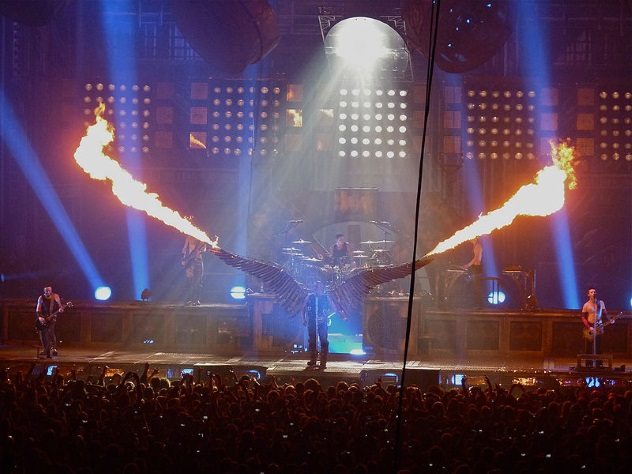
The popular German industrial metal band Rammstein have struggled with a prevalent perception that they are a group of Nazis who use seemingly dangerous fascistic elements in their live performances. Ironically, their popularity is more on account of international recognition. Their home country has been less supportive. Lead vocalist Till Lindemann has chalked it up to Germans having a problem with that part of their history and stated that they immediately associate bands that are machinelike or too German (referencing Kraftwerk) with Nazism or fascism.
The band members go out of their way in interviews to say that they are vehemently against Nazi ideologies or those of racism, bigotry, or any other type discrimination. A well-known controversy involved Rammstein using footage from Leni Riefenstahl’s infamous Nazi propaganda film Olympia for the music video for “Stripped,” a Depeche Mode cover. The band stated that they used the film simply as an example of a visionary work of art. The band’s outspoken, strenuous denial of any Nazi links has been applauded by the Anti-Nazi League, though one spokeswoman stated that they “are still misguided on the Leni Riefenstahl front” and “should have really been a bit more upfront about what they are trying to say.”[3]
However, well-known philosopher Slavoj Zizek, in his film A Pervert’s Guide to Ideology, supports Rammstein’s usage of Nazi imagery and argues that their art is the postmodern ideal. Zizek argues: “Rammstein, rather than promoting it, has actually found the key to undermining Nazism. By clearing fascist propaganda of all its content and presenting only the empty frame—the ‘gestures without precise ideological meaning’—Rammstein is able to denude fascism, emptying it of its power as a solution for social ills. By fighting Nazism like this in its ‘pre-ideological state,’ music fans can enjoy the meaningless collective gestures while the band critiques fascism from within.”
8 Ministry
Industrial music pioneers Ministry, like Rammstein, have been very vocal about their disdain for Nazism when faced with accusations of being actual Nazis. For the band’s 1988 album The Land of Rape and Honey, the popular song “Stigmata” had a video that showed what looked to be Nazi skinheads present during a Ministry stage show.
Band leader Al Jourgensen has scoffed at the idea of the band being Nazis. He revealed that after The Land of Rape and Honey was released, they “used to have Nazi skinheads come to our shows and sieg heil us,” apparently missing the band’s intent. As Jourgensen says, “That whole song [which appeared on the album] is about anti-fascism and mindless following. We had to jump down from the stage and fight the skinheads, which started another 10 rumors.”[4]
7 The Sex Pistols

The forerunners of the UK punk scene explosion in the 1970s, the Sex Pistols epitomized its anti-establishment rhetoric. So it comes as no surprise that something as controversial as Nazism or fascism would play into their attire and song content. Even before Sid Vicious became the guitarist for the Pistols, he would have a big swastika emblazoned on his shirt. David Morris of The Globe and Mail described Vicious’s choice of attire, akin to that of punk musicians in the US like the Stooges’ Ron Asheton, as “a provocation or at best a declaration of their postmodern numbness; yet to ascribe a political motive to such lumpen gestures is giving their authors entirely too much credit.”
Essentially, the insignia was to shock and appall the World War II generation, i.e. their parents’ generation. Malcolm McLaren, a seminal figure in the UK punk movement, managed the Sex Pistols. It was his and Vivienne Westwood’s shop, called “Sex,” that provided the apparel for the formative period of the UK punk scene. He would even hand out swastika armbands at punk shows. Yet McLaren is Jewish, so it is highly unlikely that he, or by extension the Sex Pistols, ever were or are anti-Semitic.
The Sex Pistols’ song titled “Belsen was a Gas” was highly controversial, and the stories about who wrote and composed it have varied. Many believe that it was mostly composed by Sid, who wrote the lyrics as an attempt to be ironic and darkly humorous. In England, “gas” is slang for having a good time. However, Johnny Rotten has more recently taken credit for the song’s lyrical content in interviews and has since been quoted as saying, “It was a very nasty, silly little thing that should have ended up on the cutting room floor.”[5]
6 Siouxsie And The Banshees
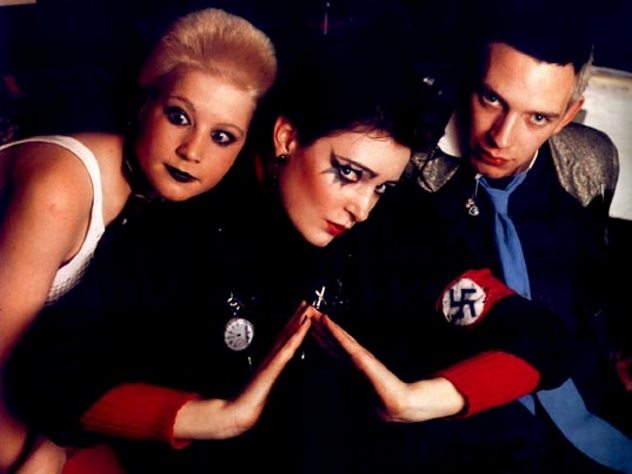
As it happens, the utilization of the swastika armband originated in New York City but quickly made its way to London to be absorbed by punk fashion or “Nazi chic” in the United Kingdom. This provocative attire, especially early on, often resulted in dangerous confrontations. An employer of previously mentioned “Sex” shop named Alan Jones was beaten bloody in Notting Hill for wearing a swastika armband. However, punks like the members of Siouxsie and the Banshees were undeterred in their choice to don Nazi regalia in public and onstage.
Siouxsie Sioux explained in an interview as to why she wore a swastika armband: “It was an anti–mums and dads thing. We hated older people always harping on about Hitler, ‘We showed him,’ and that smug pride. It was a way of watching someone like that go completely red-faced.”[6] Like the Sex Pistols, Siouxie’s motivation was to provoke the older generation, whom they held responsible for a deep economic recession coupled with sky-high inflation, which decimated the working class.
5 Joy Division
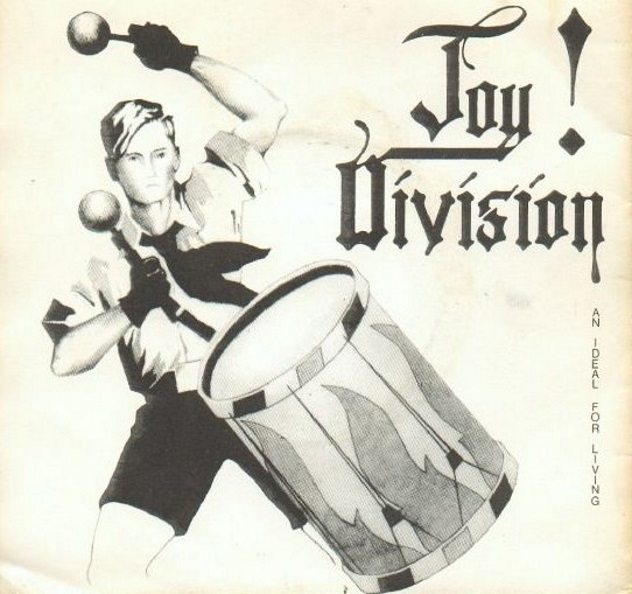
As highlighted above, 1970s Britain was characterized by declining social conditions coupled with no political leadership. Many bands came out of a generation of youth who grew up amid these conditions. The Labour government’s betrayal of the working class during the 1970s and the rise of Thatcherism at the end of the decade heralded a future of mass unemployment, government repression, and decaying industry. This generation’s music and style was emblematic of a reaction against these conditions. Joy Division, hailing from Manchester, which had a very big working-class population, was one of these groups. The band was active from 1976 to 1980 and dissolved after the suicide of singer and sole lyricist Ian Curtis.
Joy Division did indeed have a fascination with Nazi imagery. Curtis’s aim was to mirror the growing authoritarianism and sense of despair in Britain with fascist imagery in their early album art. What can therefore be argued, in a more critical and crucial way, is that the band were essentially anti-fascist. The name “Joy Division” was taken from Nazi concentration camps filled with Jewish women, whose sole purpose was to provide sexual pleasure to Nazi soldiers, as described the novella House of Dolls, written by a concentration camp survivor.
The band’s demo EP An Ideal for Living featured a cover with a Hitler Youth member pounding on a drum. The inside artwork is the infamous picture of Jews with their hands up in surrender during the Warsaw Ghetto Uprising. Curtis described the choice of artwork as “thought-provoking.” Kevin Martinez of the Socialist Equality Party penned an article in 2008, explaining the band’s relationship with Nazism: “While Curtis was not flirting with neo-Nazism, some of his bandmates indicate that they had a fascination with fascism at the time, and the whole thing suggests unseriousness and irresponsibility, as well as a growing social nihilism.”[7] Unfortunately, this did little to stop Nazi skinheads from attending Joy Division’s shows in droves or to deter regular accusations that its members were Nazis and/or supported fascism.
4 The Beatles
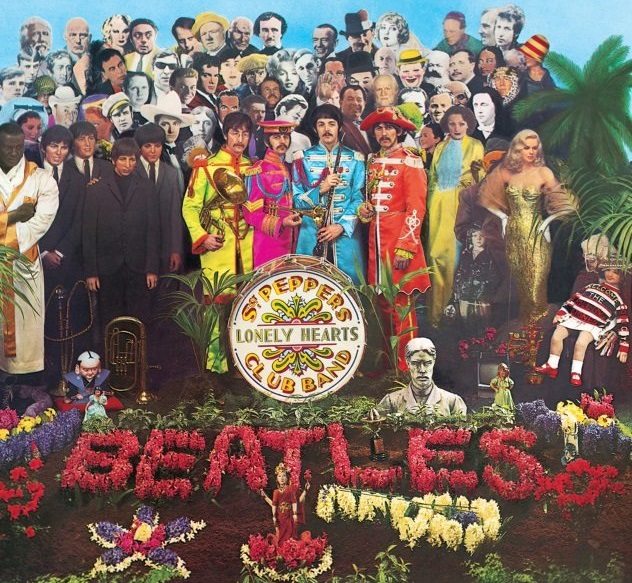
This entry, of Liverpool’s favorite export, seems unexpected, and it is, primarily because of its subtlety. The story involves the creation of the famous Sgt. Pepper’s Lonely Hearts Club Band album cover, which shows the four Beatles with a backdrop of notable characters from history, chosen by the band. The exception was Ringo, who was content to give over his choice to the other members. For Beatles fans, who know of John Lennon’s sardonic humor, it has been widely accepted that his wish to place Jesus Christ, Gandhi, and Hitler on the cover was ruled out to avoid any controversy.
However, artist Sir Peter Blake, who created the iconic cover, has revealed that Hitler did in fact make the final cut, when Jesus Christ was removed (following Lennon’s prior “the Beatles are bigger than Jesus” statement). Ghandi also didn’t make the final cut. Looking at the studio shoot outtakes, Hitler is clearly visible, in plain clothes. Blake stated, “If you look at photographs of the out-takes, you can see the Hitler image in the studio. With the crowd behind there was an element of chance about who you can and cannot see, and we weren’t quite sure who would be covered in the final shot. Hitler was in fact covered up behind the band.”[8]
This wasn’t the first time Lennon incorporated some Nazi-laced humor into the band. Before their astronomical rise, the Beatles would slum it in Hamburg, Germany, where they honed their skills as gigging musicians in less than ideal conditions. Audiences were often crueler back then. Lennon, for fun, would often greet them with “Heil Hitler” and a Nazi salute.
3 Bryan Ferry
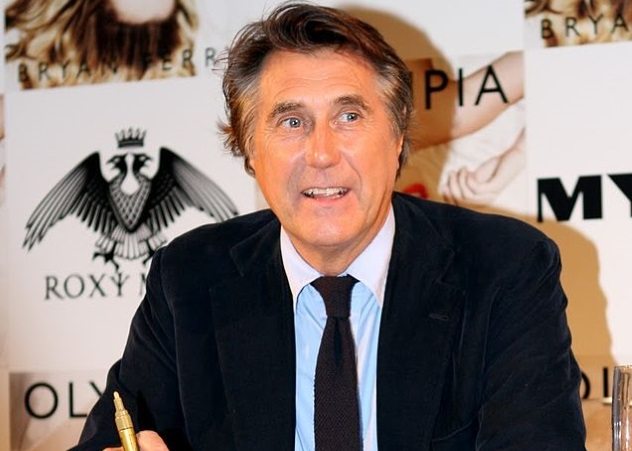
Lead vocalist for Roxy Music and successful solo artist Bryan Ferry found himself in hot water in 2007, when he made a statement in an interview giving artistic praise to Nazi regime rallies. Ferry stated, “The way that the Nazis staged themselves and presented themselves, my Lord! I’m talking about the films of Leni Riefenstahl and the buildings of Albert Speer and the mass marches and the flags. Just fantastic—really beautiful.” Following the backlash, Ferry quickly retracted his comments. In a statement released on his behalf, the singer said he was “deeply upset” by the publicity surrounding the interview.
“I apologize unreservedly for any offense caused by my comments on Nazi iconography, which were solely made from an art history perspective,” he said. Ferry also clarified, “I, like every right-minded individual, find the Nazi regime, and all it stood for, evil and abhorrent.”[9] However, this didn’t stop UK retail giant Marks & Spencer from dropping him from their lucrative model ad campaign.
2 The Rolling Stones
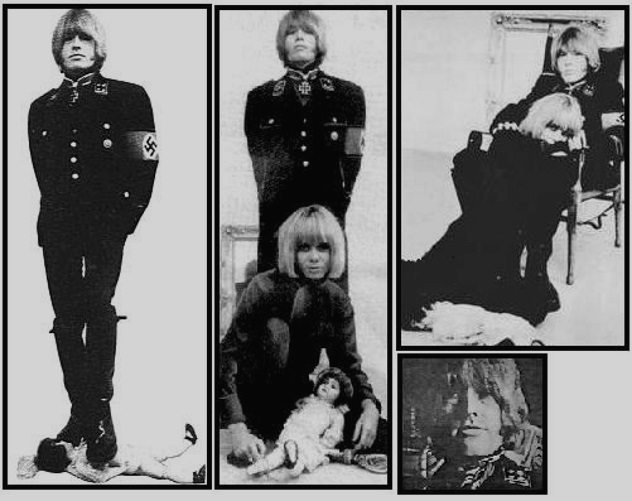
The famous among the British have a long comedy tradition of mocking Hitler and the Nazis. It extends all the way back to Charlie Chaplin’s The Great Dictator. The list goes on from there, with the likes of comedy sketches from Monty Python’s Flying Circus, John Cleese’s Faulty Towers series, and British sitcoms ‘Allo ‘Allo! and Dad’s Army. It could be suggested that British musicians who chose to incorporate Nazi imagery did so with humor in mind, not because they associated with Nazi ideology.
On rare occasions in the 1960s, Mick Jagger of Rolling Stones fame sported T-shirts with swastikas, while Keith Richards liked to dress up in a full Wehrmacht military uniform, like Lemmy, in front of friends. However, these were small gestures compared to the late Brian Jones. In an infamous photo shoot for a German magazine, he was shown, alongside his German girlfriend Anita Pallenberg, dressed in a Nazi SS uniform treading on a toy doll. Some speculate that the shoot was orchestrated by Pallenberg, though Jones explained: “Really, I mean with all that long hair in a Nazi uniform, couldn’t people see that it was a satirical thing?”[10]
1 David Bowie
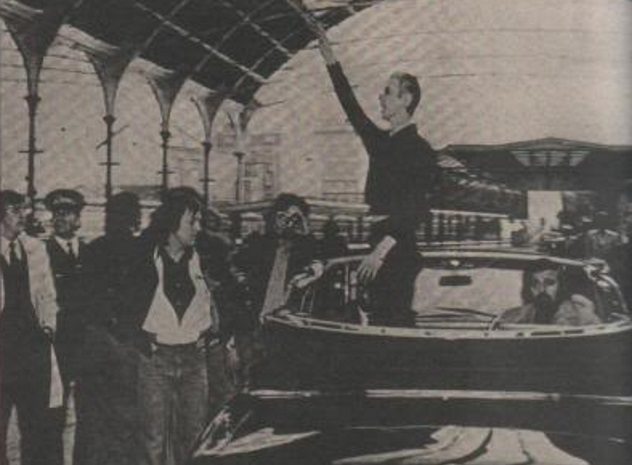
David Bowie wore many hats throughout his illustrious career as a musician, a time defined by experimentation in numerous music genres: rock, pop, soul, funk, electronic, synth, ambient, industrial, and more. His appearance also changed with his shifting personas. One of his more controversial personalities was that of the “Thin White Duke.” In the 1970s, Bowie, living in Los Angeles, as shown in the documentary Cracked Actor, was battling a very heavy cocaine addiction, to which he later attributed some of his more perverse behaviors, a kind of “cocaine psychosis.”
One such behavior was Bowie’s very open fascination with Adolf Hitler and Nazism. The documentary confirms these statements made by the artist in a Playboy article:
Britain is ready for a fascist leader . . . I think Britain could benefit from a fascist leader. After all, fascism is really nationalism . . . I believe very strongly in fascism, people have always responded with greater efficiency under a regimental leadership . . . Adolf Hitler was one of the first rock stars . . . You’ve got to have an extreme right front come up and sweep everything off its feet and tidy everything up.[11]
During his return to London in 1976, Bowie followed up this statement with a gesture that looked very much like a Nazi salute in front of fans. Bowie denied it was a Nazi salute, of course, though considering his previous comments on endorsing fascism, it wasn’t surprising that this gesture was interpreted that way. Bowie’s actions were one of the main catalysts for the establishment of the campaign Rock Against Racism in 1976, along with Eric Clapton’s drunken racist rant at one of his shows in Birmingham.
Bowie, at one time, also collected Nazi memorabilia, including Hitler’s Mein Kampf, and was said to have been photographed outside of Hitler’s bunker giving a Nazi salute. However, this photograph has never been released.
A novice writer with an interest in the bizarre and unconventional. Avid history, art, and pop culture fan and loves the occasional conspiracy theory.
Read more about controversial musicians and songs on 10 Music Genres Designed To Scare And Offend and 10 Controversial Songs That Left Their Mark On Pop Culture.
